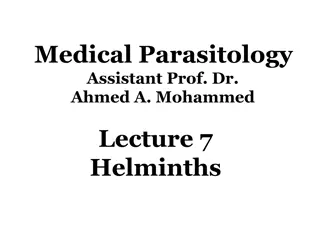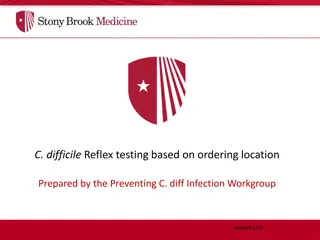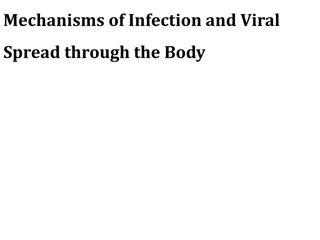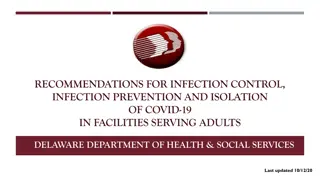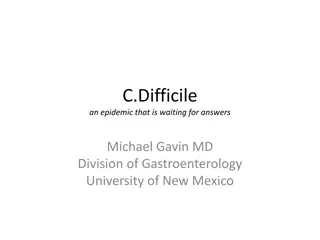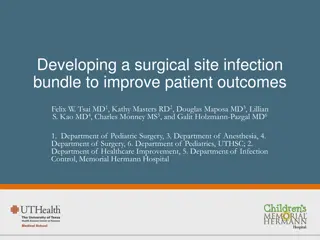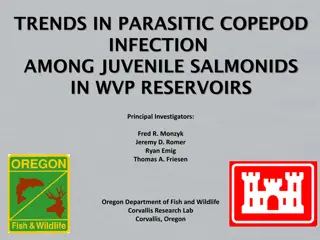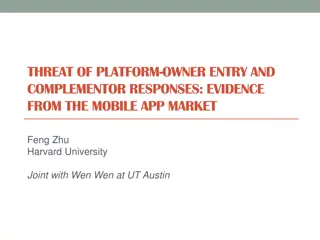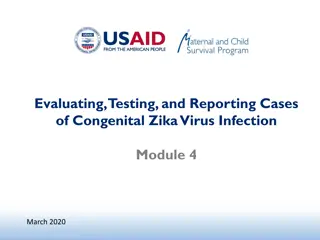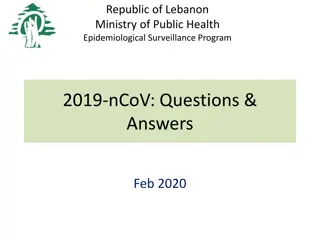Infection Guidelines for Data Entry Scenarios
Guidelines for entering different infection scenarios into a database, including pre-implant infections, colonization cases, and handling multiple organisms in cultures. Clear instructions on what constitutes a major infection adverse event and how to accurately document various infection situations.
Download Presentation

Please find below an Image/Link to download the presentation.
The content on the website is provided AS IS for your information and personal use only. It may not be sold, licensed, or shared on other websites without obtaining consent from the author. Download presentation by click this link. If you encounter any issues during the download, it is possible that the publisher has removed the file from their server.
E N D
Presentation Transcript
WE FREQUENTLY RECEIVE QUESTIONS ABOUT INFECTIONS. THE MOST FREQUENTLY ONE ASKED IS, WHAT ABOUT AN ONGOING INFECTION? HOW DO I ENTER A PATIENT THAT HAS AN ONGOING INFECTION? WITHIN THE FAQ DOCUMENT WE HAVE GUIDELINES TO HELP IN DATA ENTRY IN REGARD TO DIFFERENT INFECTION SCENARIOS.
PRE-IMPLANT INFECTIONS If an infection was present pre-implant, it will not be counted as an infection adverse event unless the infection was treated and cleared and then recurs at a later time after implant.
PRE-IMPLANT INFECTIONS Case Study 75 yo female with NICM/ICM, HTN, COPD and a-fib. She has a foley catheter in place and develops a UTI 5 days prior to LVAD implant. A urine sample was sent to the lab for culture. The culture comes back positive for Klebsiella, and she is treated with PO Bactrim for 10 days.
PRE-IMPLANT INFECTIONS Would this be entered in the database a Major Infection AE? No, this was a preimplant infection.
COLONIZATION If a patient is colonized as identified by screening cultures (ex. VRE, MRSA screenings, asymptomatic bacteruria), but is asymptomatic and is not being treated for the infection, do not count it as an infection adverse event.
COLONIZATION Case Study 52 yo male with a HM3 in place is admitted to the CICU with a new onset of a-fib. Upon admission the patient had his nares swabbed for MRSA. 3 days later that nasal swab came back positive for MRSA.
COLONIZATION Would the positive nasal swab be entered into the database as Major Infection AE? No, the patient was asymptomatic and was not treated.
MULTIPLE ORGANISMS If multiple organisms are identified on cultures form different sources all within the same 1-2 days, if it is the same type of organism (ex. All are different types of bacteria), this may be counted as one bacterial infection and for location of infection select all the locations that apply. However, if there are different types of infection identified (ex. One bacterial and one fungal), a separate infection for each type will need to be entered, and you would select all the location that were positive for the fungal culture as one infection and all the sites that had a bacterial cultural positive for the other infection.
MULTIPLE ORGANISMS Case Study 68 yo male with a HM3 in place is admitted to the CICU with SOB, fever X3 days, a productive cough with green mucus, and milky/tan drainage from driveline site. A chest x-ray was obtained, a swab from the driveline site was sent for culture as well as a sputum sample. The sputum sample came back positive for streptococcus and the swab from the driveline site returned positive for klebsiella. The patient was treated with IV Clindamycin and Cefazolin.
MULTIPLE ORGANISMS Would both these positive results be entered into the database as Major Infections? Yes.
ONGOING INFECTIONS If there is an ongoing infection in the same location with the same type of bacteria, enter the infection when it is first identified along with what type of treatment. If the intervention documented when the first infection is entered changes (ex. Go from oral or topical to IV antibiotics or surgery is needed), then enter another infection adverse event to document the change in intervention. Once the change in intervention is documented, there is no need to enter the infection again unless the infection is treated and cleared and then reoccurs. So if multiple debridements are needed and the infection has already been entered with surgery as an intervention, there is no need to enter a new adverse event for each debridement.
ONGOING INFECTIONS Case Study 72 yo female with a HM3 in place is in admitted in January of 2024 with increased driveline redness and is tender to touch. A swab of the driveline was sent to the lab. The culture resulted as Staphylococcus epidermidis (MRSE). Antibiotics were initiated as PO Doxycycline.
ONGOING INFECTIONS Would this positive culture be entered as a Major Infection AE? Yes.
ONGOING INFECTIONS Subsequent infection: In February the patient again returns with increased driveline drainage that is now requiring dressing changes 2-3 times per day. A swab of the driveline was sent to the lab. The culture resulted in a positive culture of Staphylococcus Coagulase. The patient was started on IV Vancomycin.
ONGOING INFECTIONS Would this second positive culture be entered as a Major Infection AE? Yes.
CAN YOU HAVE AN INFECTION ADVERSE EVENT WITHOUT ANY POSITIVE CULTURES? Yes, but only if the clinical evidence is strong enough. If the patient is having fevers, has a productive cough, chest consolidations on imaging, and is being treated for pneumonia (as noted in progress notes or I.D. consult notes) even if cultures have been unrevealing, then the clinical evidence would be strong enough for an infection: pulmonary adverse event.






